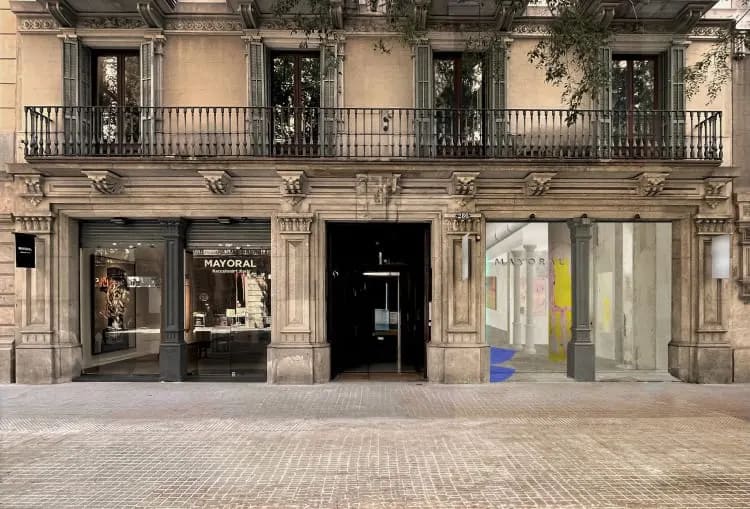Jordi Alcaraz: Paris
Jordi Alcaraz’s work invites us to observe calmly, to appreciate the materials, to enter the silence of the shapes like treading upon snow for the first time. This exhibition opens a new space —that of the contemplative gaze and suspended thought.
Alcaraz brings us closer to a strangely familiar place, one where something seems bound to happen, without ever fully coming to pass, in a liminal space between object and trace, between shape and wound, between presence and absence. The pieces embody a keen tranquillity, as though born to listen to it. The materials play a crucial part, but never flaunt. Misshapen methacrylates, meticulously shattered glass, objects suspended in delicate equilibrium —everything seems temporary, yet deeply intentional, as though each element of a work had been chosen, not to represent, but to trigger a demeanour. This is about peering beyond the visible, about listening to the inaudible.
Alcaraz’s work is testament to his unswerving loyalty to gesture and matter. His interventions are meant neither to conceal nor distort: rather, they highlight the sine qua non conditions to creation. Whether it be an element surfacing, an unfinished line, or a shadow interrupting the symmetry, each detail counts. The work is not built on a perfect shape, but on tension, on a question which the matter seems to ask itself.
This question —these questions— is also directed at us, the viewers. Looking at a work by Alcaraz is not a mere visual act, but a physical, mental, and emotional experience. Looking at it is looking at us, and sometimes, finding ourselves. It is a mirror reflecting, it is transparency revealing the structure, it is a shape vanishing as we come closer. It is an invitation to a silent collaboration in a respectful attitude. Without demanding anything back, the work encourages us to slow down, to feel, to awaken in us a deep emotion.
This is precisely what his work is about: what is unseen at first glance, what is beyond the surface, the process, the doubting, the gesture done and undone. In this art lies some strange yet deeply human beauty: the beauty of the unfinished, the temporary, the still living because still unattached. In today’s era of fast images and catch phrases, choosing slowness and ambiguity is a form of resistance.
Alcaraz works from that space: the space of transforming details and silent presence, the space of thought which does not impose, but persists. This way, the exhibition presents a space where serenity, suspended time, and introspection reign, where the viewer is invited to a slow immersion and an awakening of the senses. This is not a closed path, but an open area. This is not a passive interpretation, but a lived reflection. This is not an answer, but a different way to question.
Alcaraz’s work is not limited to what the artist created. It also includes what we discover there when we enter without haste, when we accept that to observe is to lose ourselves too, to let ourselves be touched, be transformed into someone more attentive, more fragile, but also more alive.



